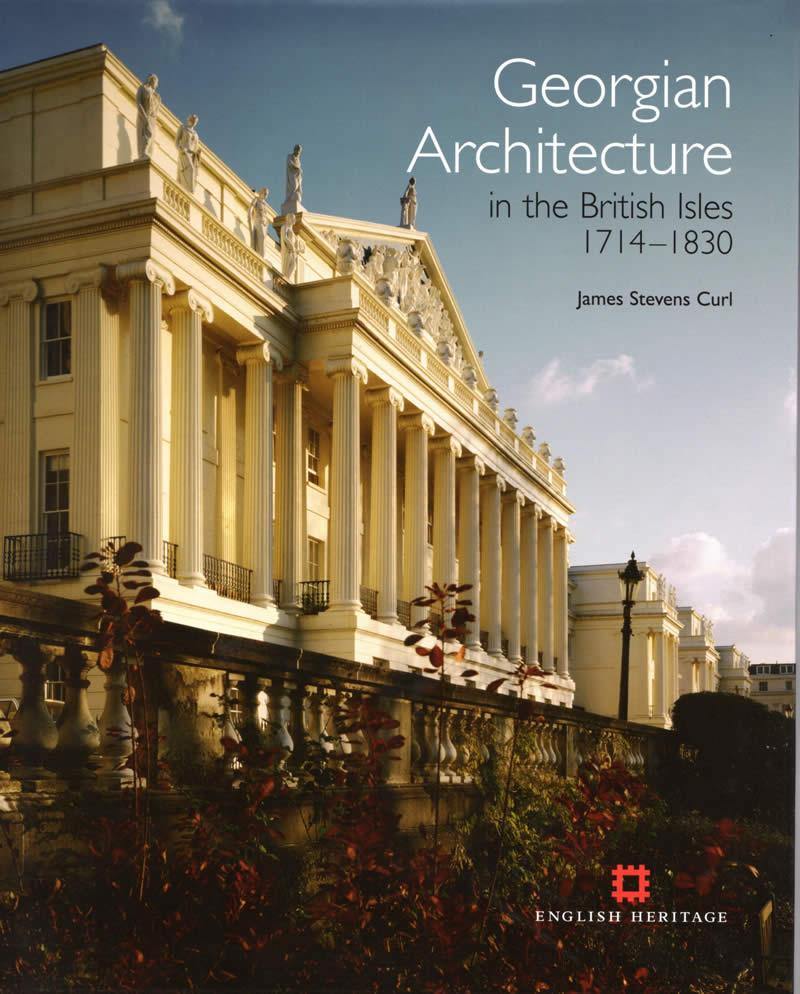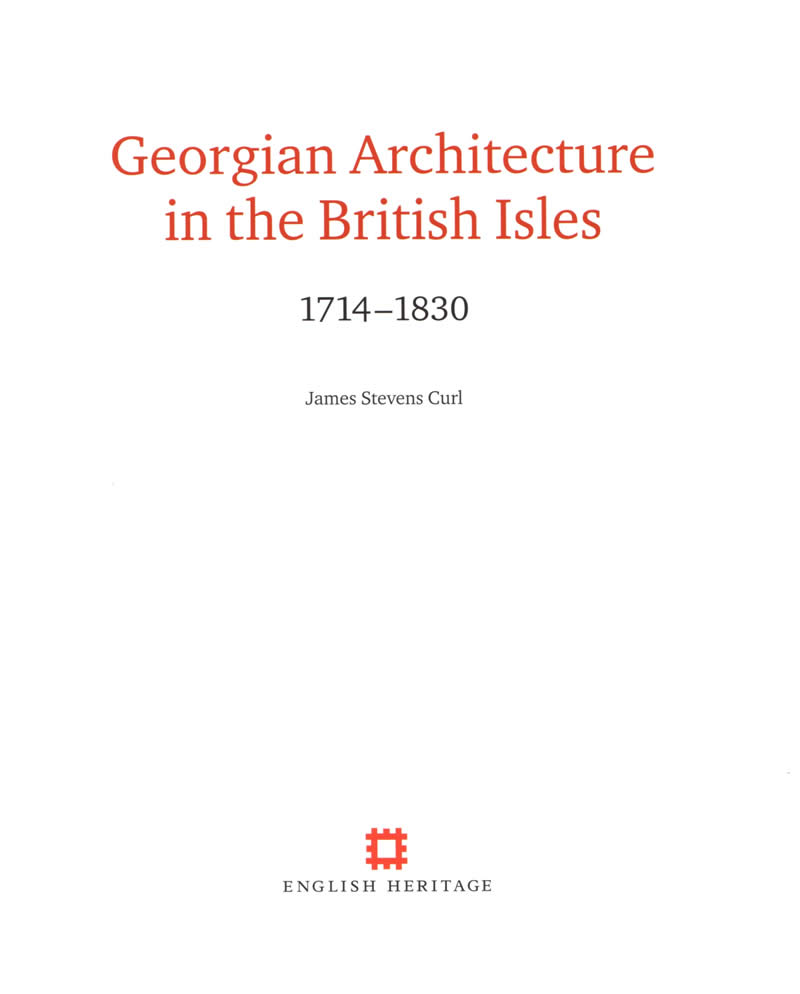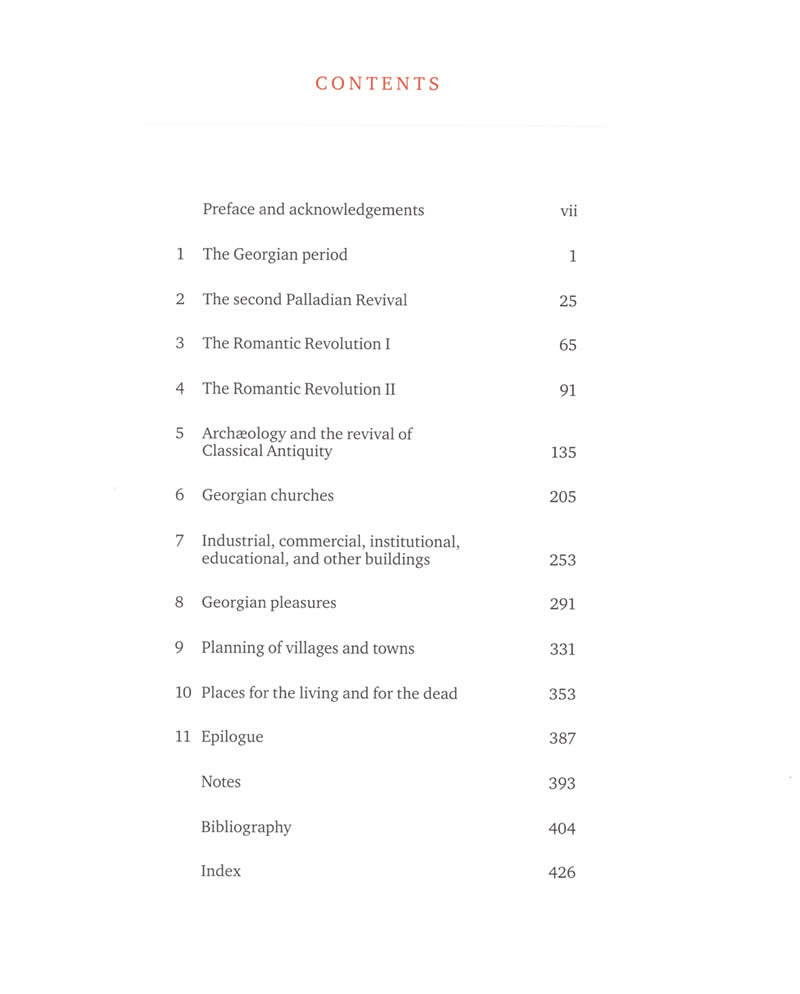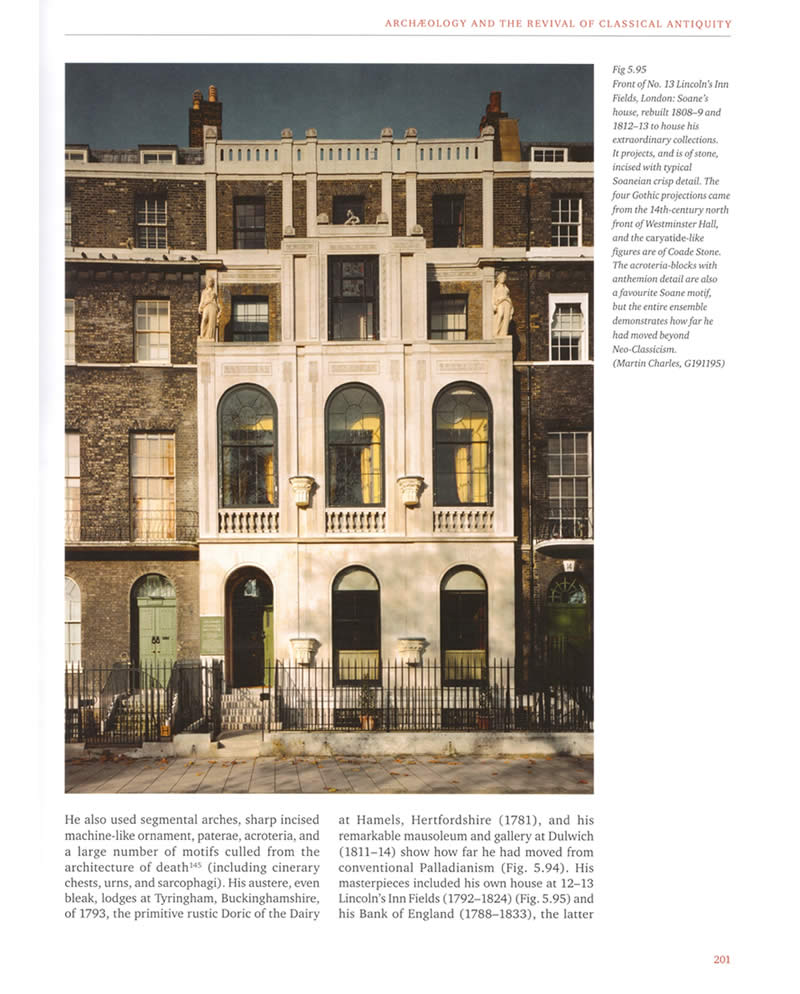Georgian Architecture in the British Isles 1714-1830

Author : James Stevens Curl
Publisher : Swindon: English Heritage, 2011
ISBN: 978-1-84802-086-3 (hbk)
A comprehensive illustrated guide to the architecture of the British Isles during the reigns of the first four Georges (1714-1830). To many people the term 'Georgian' suggests a dignified, often symmetrical façade of brick, with elegant sash-windows, a doorcase (usually with a fanlight), and a well-mannered and reticent appearance. However, there was far more to Georgian architecture than that. This book reveals the remarkable architectural diversity of the era, from the grander Classicism influenced by the architecture of Italy (notably that of Andrea Palladio [1508-80]) to the exotic tastes for Chinoiserie, Rococo, Gothick, and even the Indian (or 'Hindoo') styles. All these aspects are discussed, and the scene is set in respect of notions concerned with the aesthetic categories of the Beautiful, the Picturesque, and the Sublime, drawing especial attention to the importance of the Picturesque during the Georgian period. The book is a celebration of the main themes found in building-design of the time, and an examination of the stylistic choices of the age: Palladianism, the search for uncorrupted Classical sources through the study of Antiquity, the various revivals of Roman, Greek, and Egyptian styles, the taste for the exotic and for Orientalism, and the growing interest in mediæval architecture, monastic remains, and ruins which played such an important part in the Gothic Revival.
Reviews
‘It is notable not only for the lucidity of its writing but also for the spread of its coverage, both thematically and geographically… Conveying a strong sense of the sheer diversity of Georgian architecture is another of the book’s key strengths… [it] is handsomely provided with excellently reproduced colour and black-and-white plates, including plans and contemporary illustrations… All in all, Georgian Architecture is a major work of scholarship, written in an always enjoyable, if sometimes provocative, style, from which both the general reader and the specialist alike will most certainly reap rich rewards.’
‘The first edition of Professor Curl’s Georgian Architecture...was published in 1993 and this new edition is lavishly illustrated with contemporary drawings and photographs. The bibliography is vast and valuable, the range of the work impressive. As a work of reference it is substantial. But by far the most significant quality of this book is not so much its encyclopaedic nature but the manner in which it demonstrates that no straightforward ‘Georgian’ school of architecture exists... Rather, we are presented with a period which encompassed both successive and simultaneous shifts in aesthetics, each recognisable, and usually contrary, but none ever giving way completely to the next. One very clear theme which emerges from this study is the open-mindedness of Georgian patrons and the ensuing receptiveness in the British Isles to architectural inspiration from across the empire, and indeed the globe...In his conclusion Curl refers to the “certainties of Classicism” and “Augustan equipoise”. In fact the great strength of this work is that it deals with quite the opposite.’
‘The Georgian period was a golden age of British architecture…. It is a feast for any author and James Stevens Curl writes about it with ease and fluency, educating and entertaining at the same time. …[His] approach is more thematic than chronological, giving extensive coverage to the 18th-century castle-style and to Gothic as well as Chinoiserie, Hindoo and Mogul... Curl relates with relish how Ruskin, “whose reputation was as inflated as his prose”, railed against the monotony of London’s Gower Street, while Pugin was overjoyed when William Beckford’s Fonthill Abbey in Wiltshire, by James Wyatt “of execrable memory”, collapsed in 1825… Curl writes absorbingly about 18th-century aesthetics… The delight of this book is that every new page presents a major or minor masterpiece, many fresh to most eyes. Though published by English Heritage it has very extensive coverage of Ireland…and Scotland too, with quite a smattering of Wales… The book is very well laid out and edited, with plans, engravings and photographs old and modern (and always dated) and text on the same page as the illustrations. Supported by the Georgian Group, it is a significant reworking of Curl’s original book of 1993 with excellent chapters on industrial, commercial and institutional buildings. These include the Piece Hall in Halifax, a cloth market echoing a Roman Forum, and the Belfast Charitable Society’s Clifton House of 1772, which could be in New England or Virginia. Another chapter on “Georgian Pleasures” is devoted to taking the waters at wells and spas, to pleasure gardens with their triumphal arches, and to Georgian assembly-rooms, taverns, and coaching inns. Each chapter is opened by lively quotations, including Pope’s famous Epistle to Lord Burlington.’




 LinkedIn
LinkedIn  Wikipedia
Wikipedia